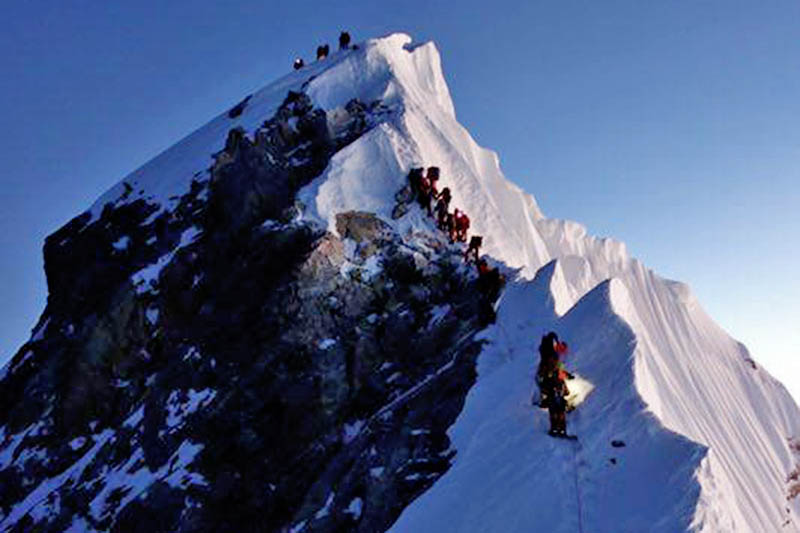Everest’s Hillary Step now a ‘slope’: Climbers
Kathmandu, May 23
Mount Everest’s Hillary Step — a rocky outcrop just below the summit — is now a slope, say climbers who recently returned from the mountain.
The condition of the rock face named after Everest’s first summiteer Edmund Hillary has been the subject of intense speculation since climbers last year declared it had gone. Others disagreed saying fresh snowfall had caused the confusion.
Mountaineers returning from the summit this month have unanimously said that what was once a near-vertical 12-metre rock face is now a gradual snowy slope and makes the final ascent quicker and easier.
“The Hillary Step is not like we’ve known it to be,” said Nepali guide Dawa Phinjo Lama Bhote, one of seven climbers AFP spoke to.
“A big stone of about five metres is gone. The area is now easier to climb,” added the seven-time Everest summiteer.
The step formed part of a narrow, exposed ridge connecting Everest’s south summit (8,749 metres) with the true summit (8,848 metres).
Hillary and Tenzing Norgay famously scrambled up the sheer step in 1953 when they became the first climbers to conquer Everest.
Since that first successful summit, all climbers summiting Everest via the southern route have used ropes to pull themselves up the formidable obstacle, before swinging one leg over a “saddle” at the top.
But straddling the top boulder and shuffling along the precipice is no longer necessary.
“The Hillary Step has changed. We now climb it on the right hand side going up a snow slope,” said British climber Kenton Cool, who made his 13th summit of Everest last week.
“It clearly doesn’t have the little corner between the snow and the rock that used to be there. There’s not the rock on the top of the step that you used to go ‘à cheval’ (straddle) and shuffle along.”
Climbers say the disappearance of the step has left little more than an undulating ridge to the summit.
“The area of the Hillary’s Step is a moderately steep snow ridge, but does not stand out more prominently than any other section between the south summit and main summit,” said a climber who declined to be named.






